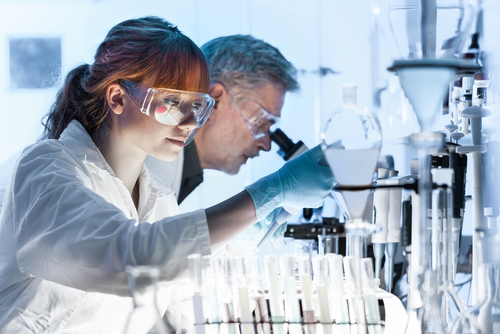Protein That Turns Certain T-cells into Inflammatory Agents Identified in Early Study

A protein called Satb1 appears to be the “on switch” that turns a type of T-cell called Th17 from its typical protective role into one that is disease-causing, and key in the development of multiple sclerosis and other inflammatory autoimmune disorders, a study reports.
These findings suggest that Satb1 may be a therapeutic target for autoimmune diseases like MS.
Immune cells called T-helper 17 cells play a range of roles in immunity, including protecting against infecting pathogens — bacteria, viruses, and other microorganisms that can cause disease.
But Th17 cells are also players in the development of such autoimmune diseases as MS, psoriasis, inflammatory bowel disease, and rheumatoid arthritis. This is because Th17 cells can be stimulated to become T-cells that engage in pathogenic, or disease-causing, immune programs.
How Th17 cells switch from their typical and helpful immunity role to that of a pathogenic actor has not been resolved, although it is thought critical to treating inflammatory autoimmune diseases.
An international team led by researchers at Osaka University and Kyoto University, in Japan, tried to identify the mechanism behind the disease-causing program of Th17 cells. To do so, they built upon previous findings showing that a protein regulator called Satb1 is important in the development of Th17 cell subsets.
“We have known for some time that Satb1 is indispensable for the development of T-cells in the thymus. However, how it is involved in the regulation of pathogenic processes of Th17 cells in inflamed tissues had not been examined,” Keiko Yasuda, MD, the study’s lead author, said in a press release.
Researchers used a standard mouse model of MS, called experimental autoimmune encephalomyelitis (EAE) mice. These animals had genetically-modified Th17 cells that lacked Satb1. Researchers tested how Th17 cells lacking Satb1 acted when subject to inflammatory conditions, and how they were stimulated to activate a “pathogenic effector program.”
Interestingly, these modified mice were resistant to the development of EAE, or MS-like, disease. Researchers saw fewer Th17 cells infiltrating the animals’ spinal cord. Also, Th17 cells lacking Satb1 showed poorer production of key pathogenic signaling molecules in autoimmunity, notably one called granulocyte-macrophage colony-stimulating factor (GM-CSF).
GM-CSF is known to cause localized tissue inflammation in MS and other inflammatory autoimmune diseases.
Researchers went on to show that Satb1 can act as a switch between benign and pathogenic Th17 cells, depending on their exposure to healthy or inflammatory conditions. They found molecules that boost the pathogenicity of Th17 cells, such as Bhlhe40, and molecules that promote normal immune function, such as PD-1. Of note, PD-1 is shut down when Th17 cells engage in their pathogenic effector program.
These results showed Satb1 to be a key regulator of Th17 cell pathogenicity in these MS mice. Halting Th17 cells from making Satb1 may offer a way of treatting various autoimmune diseases.
“Together, our findings, in addition to providing novel insights into the molecular mechanisms underlying the pathogenic program of tissue Th17 cells in mice, may help design novel immunotherapeutic approaches such as small molecule modifiers of Satb1 for the treatment of autoimmune diseases,” the researchers wrote.
Future studies are needed to confirm these results in people. A previous study in people also suggested a link between Satb1 and the pathogenic function of Th17 cells in the central nervous system of MS patients.
Overall, “our results suggest that manipulating Satb1 gene expression in Th17 cells could form the basis of novel treatments for various autoimmune diseases caused by Th17 cells. If we can prevent the pathogenic processes of Th17 cells, we may be able to alleviate or even eliminate disease symptoms,” concluded Shimon Sakaguchi, PhD, one of the study’s senior authors.






